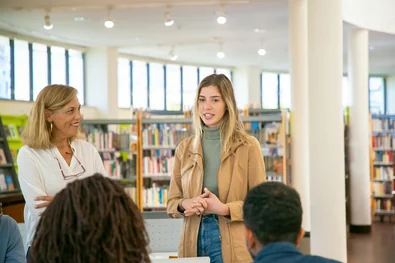Effective Strategies for Collaborating with Parents to Enhance Student Achievement
Building strong relationships with parents is essential for fostering student success. By leveraging supportive communication, educators can create a unified environment that promotes learning both at school and at home.
Understanding the Value of Parent-Teacher Partnerships
For many educators, reaching out to parents can feel as daunting as a trip to the dentist. While we acknowledge the necessity of these interactions, they can often be uncomfortable and challenging. However, recognizing the value of building and nurturing relationships with parents can equip teachers with vital skills that enhance the educational experience. By embracing collaborative models of engagement, we can create a supportive atmosphere that benefits students, teachers, and families alike.
Research indicates that when parents and teachers align their efforts and communicate effectively, students are more likely to thrive. This partnership fosters a culture of high expectations and shared accountability, making it easier for educators to advocate for their students while also providing them with a sense of security.
Here are three actionable strategies for cultivating effective parent partnerships:
1. Identify Preferred Communication Methods
Every parent has a unique schedule and preferred mode of communication. Parents may come from various backgrounds—some are small business owners, while others may juggle multiple jobs or manage household responsibilities. Establishing effective communication channels is crucial for building strong partnerships.
Begin by determining the best way to reach each family. While many parents prefer text messages or emails due to their busy lifestyles, these methods can sometimes lead to misunderstandings. A personal phone call can bridge the gap and foster a more meaningful connection. Flexibility in communication can make a significant difference in collaboration, ensuring that both teachers and parents remain informed and engaged in the student’s learning journey.
2. Prioritize Positive Communication
Often, communication with parents focuses on student challenges, such as behavioral issues or academic struggles. However, initiating conversations centered on positive achievements can enhance responsiveness and collaboration. As educators, we have the opportunity to recognize and celebrate student successes, no matter how small.
Make it a habit to share positive updates with parents, whether it’s a quick text about a student’s improved behavior or a photo showcasing their engagement in class activities. This proactive approach not only boosts student confidence but also reinforces the home-school connection. One teacher's experience illustrates this well: after sending a positive message about a student’s writing progress, the student was surprised and delighted, having only received negative feedback in the past. This simple act of recognition can transform relationships and foster a supportive learning environment.
3. Shift to an Asset-Based Mindset
Reflecting on our mindset is essential in how we perceive and engage with students and their families. Adopting a deficit mindset—focusing on what parents lack or the barriers they face—can hinder effective communication. Instead, educators should embrace an asset-based approach that emphasizes collaboration and shared goals.
This perspective involves recognizing parents as partners who are invested in their children's education. When we start our interactions with the assumption that families care and want to contribute to their child's success, we create a more constructive dialogue. This shift allows teachers to concentrate on solutions and collaborative strategies, reinforcing the shared mission of promoting student achievement.
Conclusion
Establishing effective partnerships with parents is vital for enhancing student success. By identifying preferred communication methods, prioritizing positive interactions, and adopting an asset-based mindset, educators can foster a collaborative environment that benefits everyone involved. When parents and teachers work together, students are more likely to thrive academically and socially, paving the way for a successful educational experience. Embracing these strategies is an investment in our students' futures, and the rewards are immeasurable.



